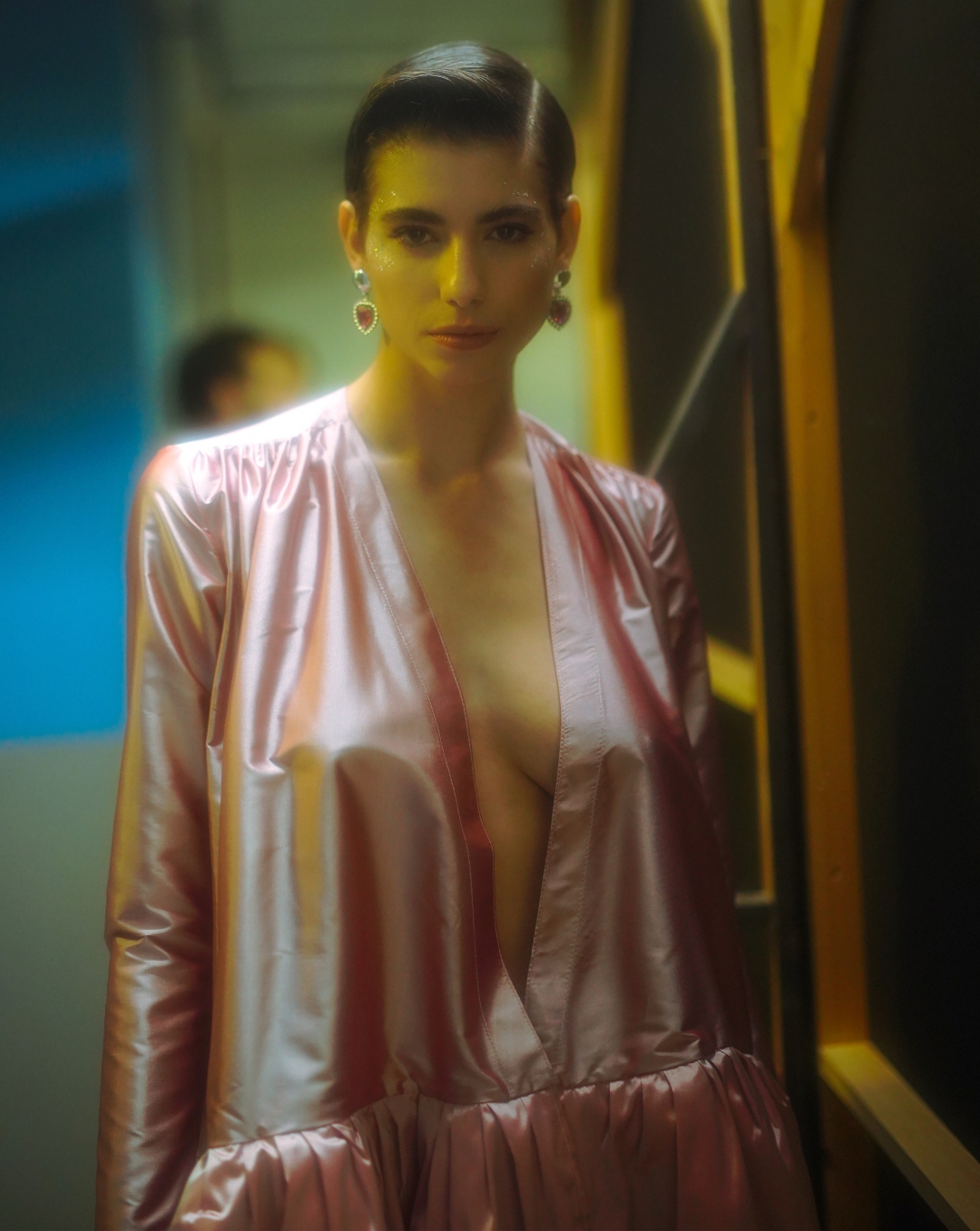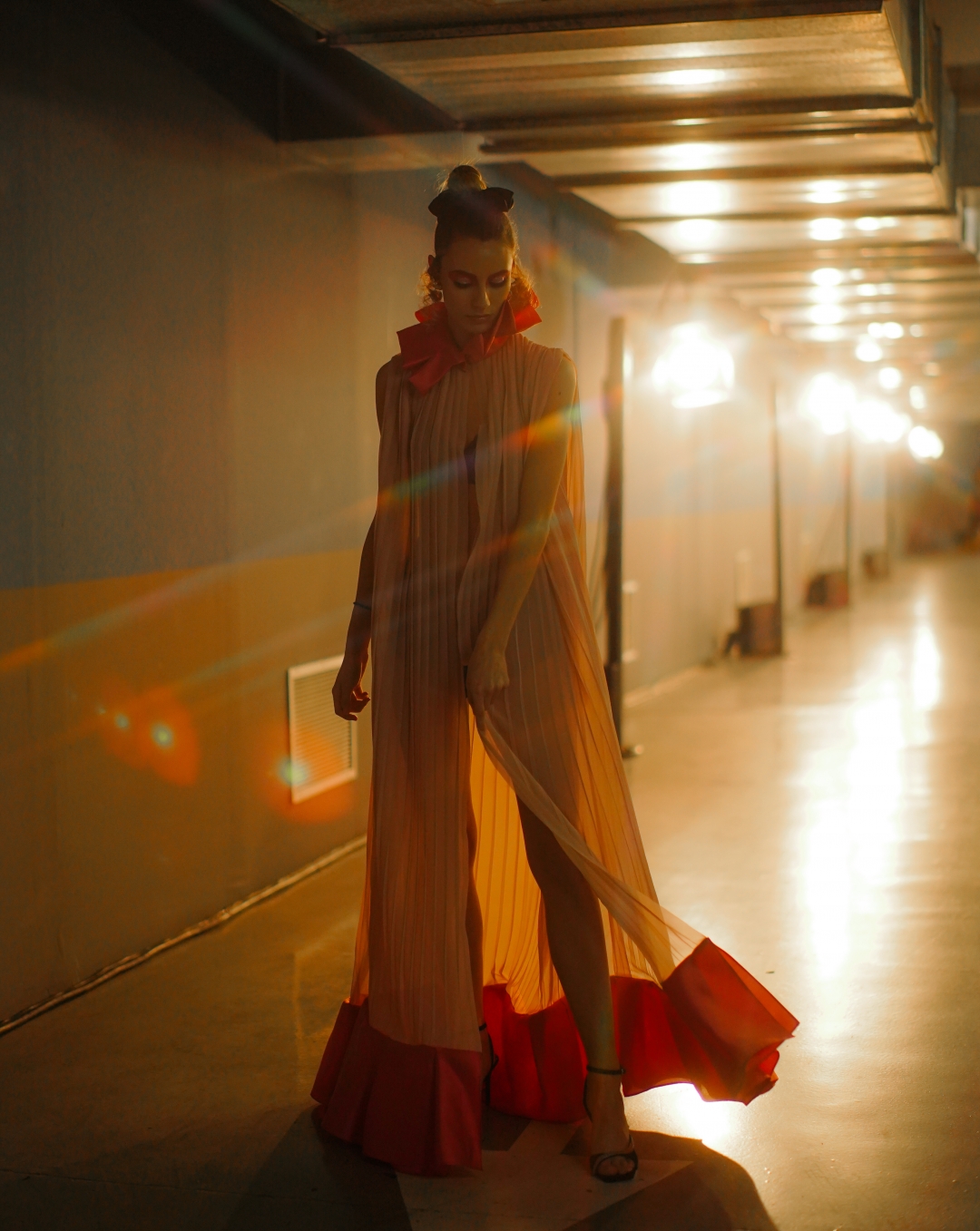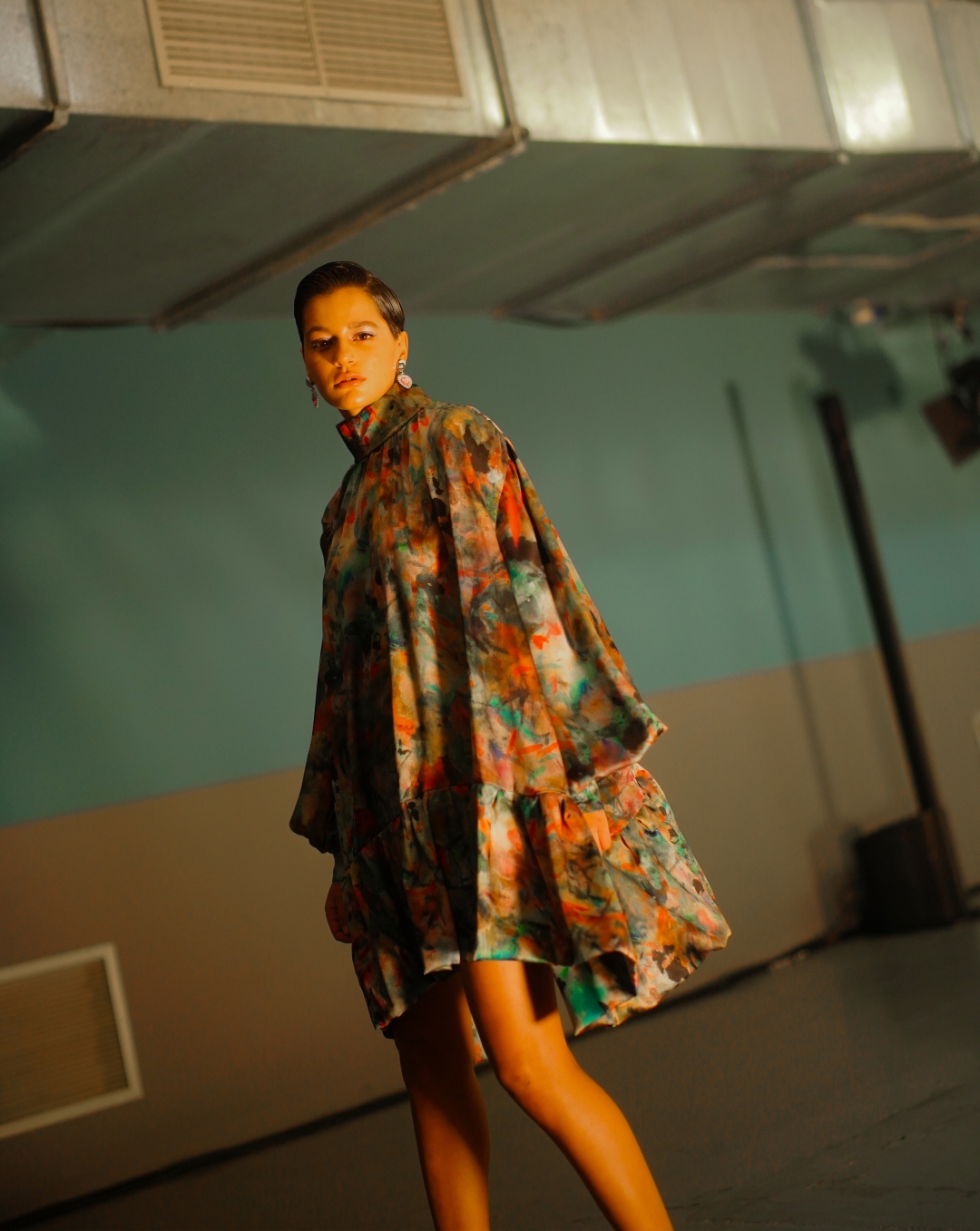Encinar
Living Fashion in Style
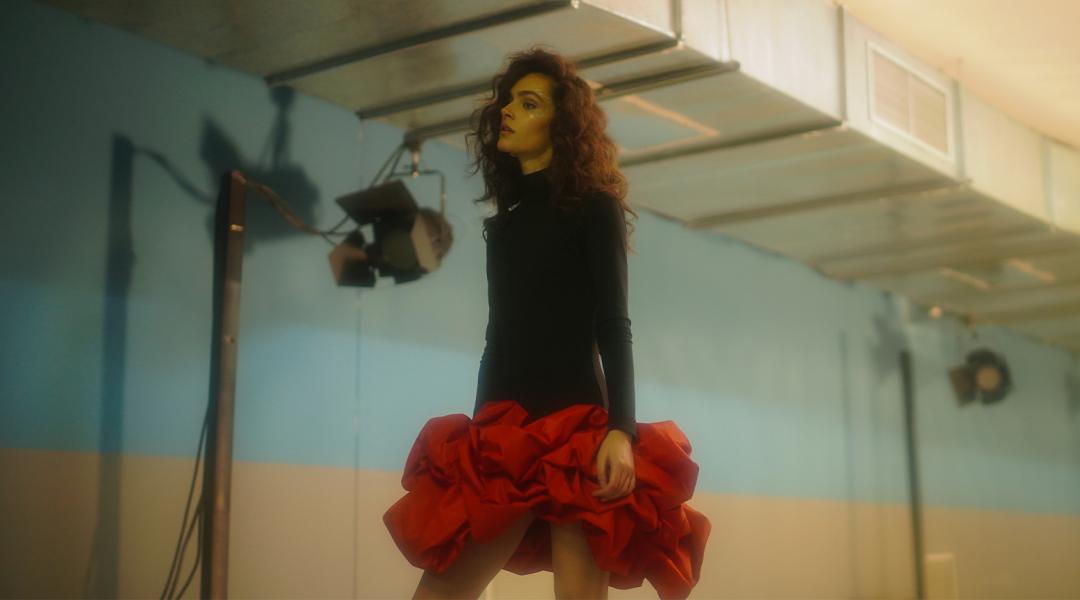
Madrid-born dressmaker has reached a hegemonic position in Spanish fashion thanks to volume, a key element in 20th century Spanish design that is present in all his clothes.
Fabio Encinar (Madrid, 1991) says that more is always more. This is the axiom governing his designs. Large ruffles, XXL bows and exuberant volumes are shaped into capes, dresses and tops sewn like it was the norm in the 1980s, a decade that fascinates a designer who forged his destiny one night out for drinks.
For a while, his creations revolved around the shirt, but today Spanish quinqui cinema, Spanish folkloric female singers and 80s tragicomedies inhabit his imagery and put his universe in motion. His latest collection, #ENCINARFW20, which he showed at the Off Mercedes Benz Fashion Week Madrid, pays tribute to freedom and gypsy women. It has stricken a chord even among high society, so much so that the likes of Tamara Falcó and Mar Torres have already introduced into their wardrobes the most coveted of-the-moment revival.
What is so fascinating about the 1980s?
I was born in 1991, so I didn’t experience them first-hand, but I don’t think you need to live a certain period to fall in love with it. I’m most inspired by the end of the decade, which I find rather grey socially speaking. I relate it with Almodovar’s What Have I Done to Deserve This?; with quinqui cinema, which I adore, and with characters such as El vaquilla, Azúcar Moreno, Las Grecas… There’s sad story behind all of them. I think there’s a high degree of romanticism to them and a very marked aesthetic that I like to turn into something joyful. I’m fascinated about the socially ugly or marginal, but with the aim to remove that weight of sadness.
All those references lead to think that any time in the past was better, doesn’t it?
I think any time in the past can make the present better. I’m often told: “You haven’t invented anything.” But that isn’t my role. I’m not doing anything that hasn’t yet been made. For example, the capes Rocío Jurado used to wear on stage are similar to the ones I or Valentino are making today. Back then, that excess was kind of fusty, but today it’s top.
“I’m fascinated about the socially ugly or marginal, but with the aim to remove that weight of sadness.”
Has the same happened with moiré, your fetish fabric?
When we decided to use it, it was very hard to find because no one wanted to wear it anymore. We found a company in Valencia specializing in fireproof fabrics who sold moiré. Then, one of our suppliers started offering it and, two months later, they run out of stock because Valentino had used moiré in a collection and all of a sudden everyone was ordering it.
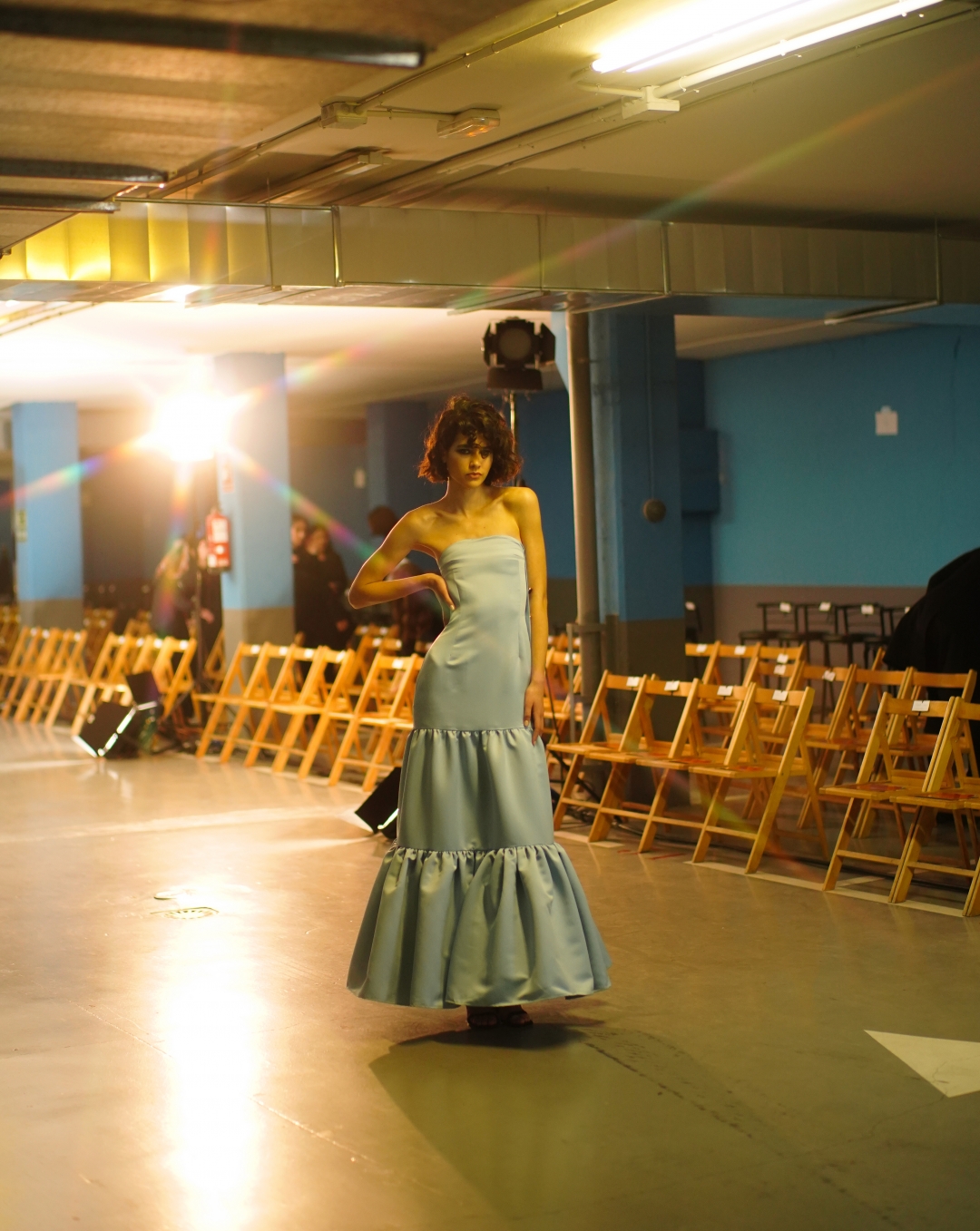
Image from the #ENCINARFW20 fashion show at the Off MBFWM. © Julen Martín
And what is the trend now? What will be your next discovery?
Now we’re working with wild silk, which is a kind of fabric we’ve always found appalling. The point is to know how to work with it.
What does volume need to look grandiose?
The technique used during the 1980s. The kind of volumes that we’re after can only be made as they were made back then. We’re lucky that our atelier manager worked a lot during that decade and knows how to sew them.
How do you manage to bring that aesthetic to the present?
It’s important to update the shape, bringing the volume to today’s world. It’s a play between the past and the present — you take the inspiration and replicate something adapting it to the present time.
You studied at the prestigious Central Saint Martins design school. Was that experience in London what awakened your taste for all things Spanish?
On the contrary. I returned from London being a staunch minimalist. In fact, the headlines for my interviews three years ago were: “The King of Shirts”, “The White Shirt” … I was obsessed with that garment. This is the first time there are no shirts in my collection. In 2017, I started playing with volumes and moiré. It’s been an evolution.
You have gone from being the king of shirts to becoming the king of volumes. What triggered that change?
Sometimes less is more, but some other times, more is always more. Who would have guessed this would happen? My first collection with volumes was inspired by the documentary Paris is Burning, which is about drag queen fashion shows in London during the 1980s and 1990s. Now it has become very fashionable, but no one talked about it before. And then Netflix premiered Pose, a TV series inspired by them.
Will we go back to minimalism?
I don’t know, it all goes through phases. It’s not about adding things for the sake of adding things, sometimes at the fittings I remove certain elements. Maybe in five years’ time I’ll go back to designing very clean clothes.
Lola Flores and Azúcar Moreno are among your influences, as well as Roman Polanski and photojournalism.
My influences come from anywhere. Just the other day, the film Yo, Cristina F. came to mind. It was the first film that aroused an interest in adolescence in me. I’m also inspired by films such as Io Sono L’Amore and A Bigger Splash, with their classic and romantic aesthetic. They pay a lot of attention to their looks, something I don’t do. That deserves all my respect.
Would you like to dress a folkloric Spanish singer?
I would have loved to dress Lola Flores. Now I know fashion edits featuring her or Rocío Jurado would have been made because there are no figures of that calibre left. We owe a lot to these artists; we grew up with them as part of our everyday lives.
Where can we purchase Encinar clothes?
After a couple of seasons manufacturing the collections ourselves, we’re now focusing on tailored design, which is a channel that works very well in Spain. If things go according to plan, in a couple of months we will be selling online through different channels. Over the past few years we’ve learned that the most spectacular dresses are made to order.
By the way, why did you choose fashion as a profession?
I don’t know. I owe this to a friend. When I was 18, I was a bit lost and we decided to study at Central Saint Martins. He dropped out because he realized fashion wasn’t his thing and went on to create a magazine called ODDA. We probably made that decision on a night out. It worked for the two of us. We grew up listening how the Movida had been the best time in Madrid creatively speaking, but we lived something similar. All the designers of our generation would go to the same clubs, like the Elástico and the Ocho y medio. Photographers, designers and journalists would all hang out there. It was like a second Movida for us, less public and notorious, but I think it was important for the artistic moment that we’re living now.
